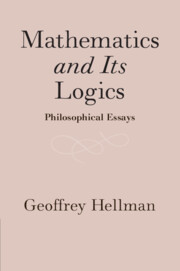Book contents
- Mathematics and Its Logics
- Mathematics and Its Logics
- Copyright page
- Contents
- Acknowledgements
- Introduction
- Part I Structuralism, Extendability, and Nominalism
- Part II Predicative Mathematics and Beyond
- 7 Predicative Foundations of Arithmetic
- 8 Challenges to Predicative Foundations of Arithmetic
- 9 Predicativism as a Philosophical Position
- 10 On the Gödel–Friedman Program
- Part III Logics of Mathematics
- Index
- References
9 - Predicativism as a Philosophical Position
from Part II - Predicative Mathematics and Beyond
Published online by Cambridge University Press: 26 January 2021
- Mathematics and Its Logics
- Mathematics and Its Logics
- Copyright page
- Contents
- Acknowledgements
- Introduction
- Part I Structuralism, Extendability, and Nominalism
- Part II Predicative Mathematics and Beyond
- 7 Predicative Foundations of Arithmetic
- 8 Challenges to Predicative Foundations of Arithmetic
- 9 Predicativism as a Philosophical Position
- 10 On the Gödel–Friedman Program
- Part III Logics of Mathematics
- Index
- References
Summary
As is well known, predicative mathematics has long been motivated by skepticism concerning the classical conception of the Cantorian transfinite and, in particular, of the continuum, or the notion of “all subsets of (even) a countably infinite set.” Along with constructivism, predicativism regards as suspect talk of functions which cannot even in principle be given a definite mathematical description. Indeed, a basic predicativity requirement is that any recognized mathematical object be presentable by means of a finite string of symbols from a countable language, where this is understood to include formulas defining sets or functions, with quantification in the formulas restricted to “already acceptable” objects. In contrast with intuitionism, however, the natural number system is treated classically, and classical logic is taken as legitimate. The focus, then, is on principles of set existence. In accordance with Russell’s “vicious circle principle,” sets of natural numbers cannot legitimately be introduced via definitions or formulaic conditions with unrestricted quantifiers over such sets.
- Type
- Chapter
- Information
- Mathematics and Its LogicsPhilosophical Essays, pp. 139 - 153Publisher: Cambridge University PressPrint publication year: 2021



